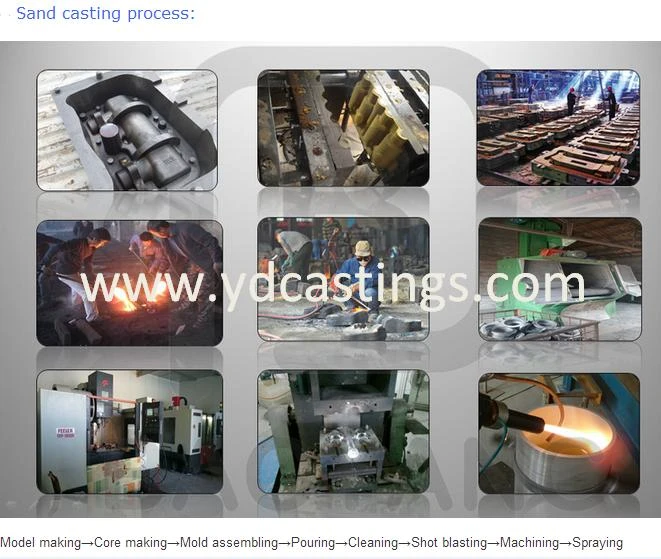Mobile:+86-311-808-126-83
Email:info@ydcastings.com
fundamentals of metal casting
Fundamentals of Metal Casting
Metal casting is an age-old manufacturing process that encompasses the pouring of molten metal into a mold, where it solidifies into the desired shape. This versatile method is fundamental to the production of a wide variety of components in industries ranging from automotive to aerospace, and even artistic applications. Understanding its fundamentals is essential for engineers and designers involved in the manufacturing process.
Fundamentals of Metal Casting
Once the metal is chosen, the next stage is mold making. Molds can be created from various materials such as sand, metal, or ceramic. Sand casting is one of the most prevalent techniques due to its cost-effectiveness and ability to produce complex shapes. In this process, a pattern of the desired object is embedded in sand to create a cavity, which serves as the mold. The sand is often mixed with a binding agent to enhance its strength and ensure it holds the shape.
fundamentals of metal casting

After preparing the mold, the metal is melted and purified to eliminate impurities that could affect the final product's quality. Different melting methods, such as induction, electric arc, or gas furnace, can be employed, depending on the type of metal and the scale of production. Precision in temperature control is crucial, as overheating can lead to defects like oxidation or cracking.
The next step is pouring the molten metal into the mold. This must be done carefully to avoid air pockets or turbulence, which can lead to defects such as porosity or incomplete filling. Once filled, the metal is allowed to cool and solidify, a process that can take anywhere from seconds to hours, depending on the thickness of the casting and the type of metal used.
After the metal has solidified, the mold is removed, revealing the casting. This is followed by several finishing processes such as machining, grinding, and surface treatment to achieve the desired dimensions and surface finish. Quality control is a critical aspect of metal casting, as defects can compromise the integrity of the final product. Inspection methods, including visual examination, X-ray testing, and ultrasonic testing, are employed to ensure that the casting meets the required specifications.
In conclusion, metal casting is a foundational manufacturing process that combines science and artistry. Understanding its fundamentals—material selection, mold creation, melting, pouring, and finishing—enables manufacturers to produce high-quality, reliable components. As industries continue to evolve, advancements in casting techniques and materials will undoubtedly enhance the capabilities and efficiency of this vital manufacturing method.
-
Why Should You Invest in Superior Pump Castings for Your Equipment?NewsJun.09,2025
-
Unlock Performance Potential with Stainless Impellers and Aluminum End CapsNewsJun.09,2025
-
Revolutionize Your Machinery with Superior Cast Iron and Aluminum ComponentsNewsJun.09,2025
-
Revolutionize Fluid Dynamics with Premium Pump ComponentsNewsJun.09,2025
-
Optimizing Industrial Systems with Essential Valve ComponentsNewsJun.09,2025
-
Elevate Grid Efficiency with High-Precision Power CastingsNewsJun.09,2025











